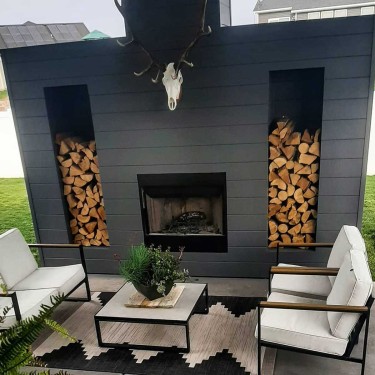Fire it up and gather around. An outdoor fireplace creates a warm and inviting hub for relaxing and entertaining in the backyard.
Every editorial product is independently selected, though we may be compensated or receive an affiliate commission if you buy something through our links. Ratings and prices are accurate and items are in stock as of time of publication.
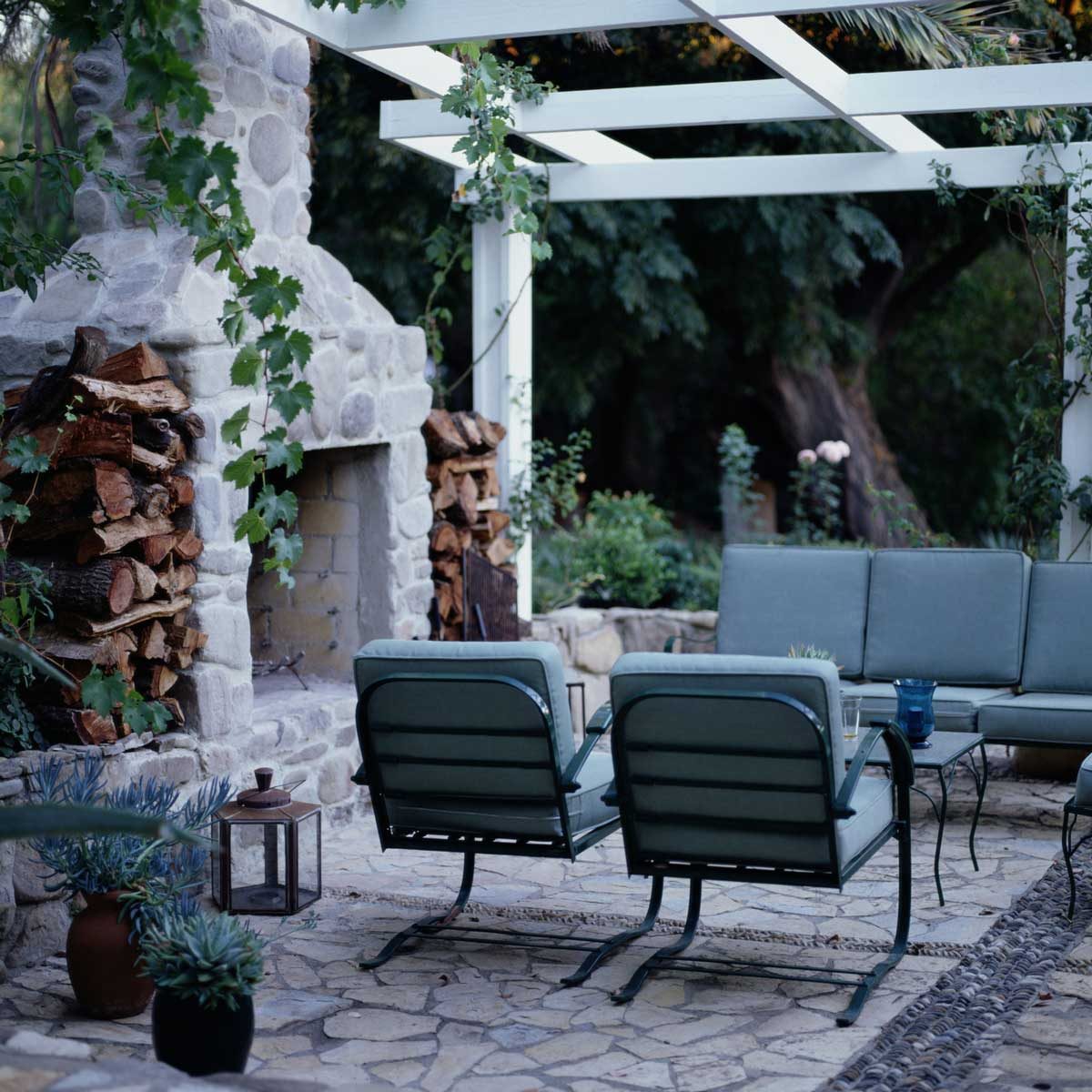
Choosing an Outdoor Fireplace
On brisk evenings all year round, outdoor fireplaces take the chill off, turning your deck, patio or garden into a comforting and cozy retreat. If you’re thinking about adding an outdoor fireplace to your backyard, here are things to consider:
- Is the fireplace for warmth, cooking or both
- Wood-burning, gas, propane or electric
- Size of space
- Fixed or portable
- Smokeless fire pit
- Style
- Cost
- Pro or DIY installation
- Permits/local ordinances
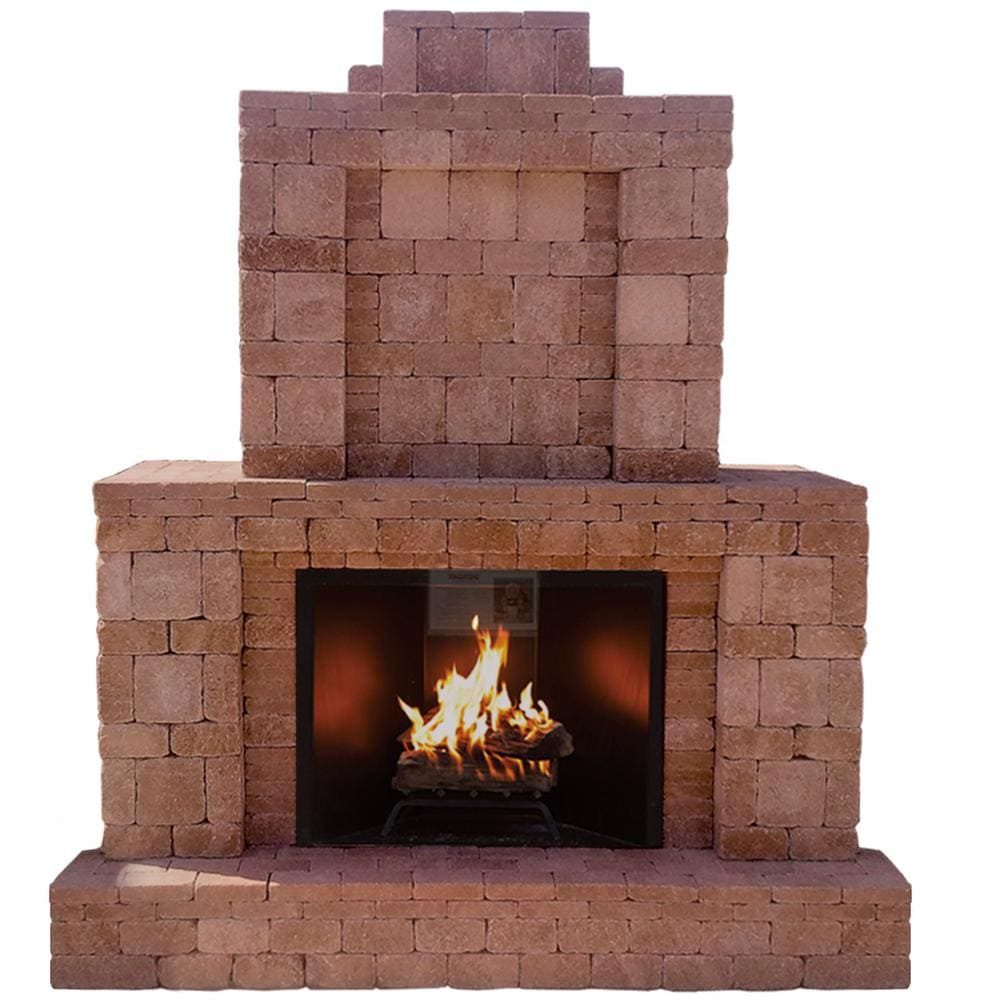
Wood-Burning Outdoor Fireplace
The best option for experiencing a crackling, roaring fire, wood-burning outdoor fireplaces fit well in large or small yards and patios. Build a fireplace from scratch, purchase a fireplace kit, or save time and money by sourcing it ready-made.
Pros
- Creates a natural atmosphere
- Smoke rises up the chimney
- Increases home value
Cons
- Not clean burning
- Requires lots of maintenance
- Sparks can be a fire hazard
For a great DIY option, we really like the authentic vibe of Pavestone’s outdoor fireplace kit. It’s made of weathered-look RumbleStone that doesn’t require mortar; it utilizes heavy-duty adhesive instead.
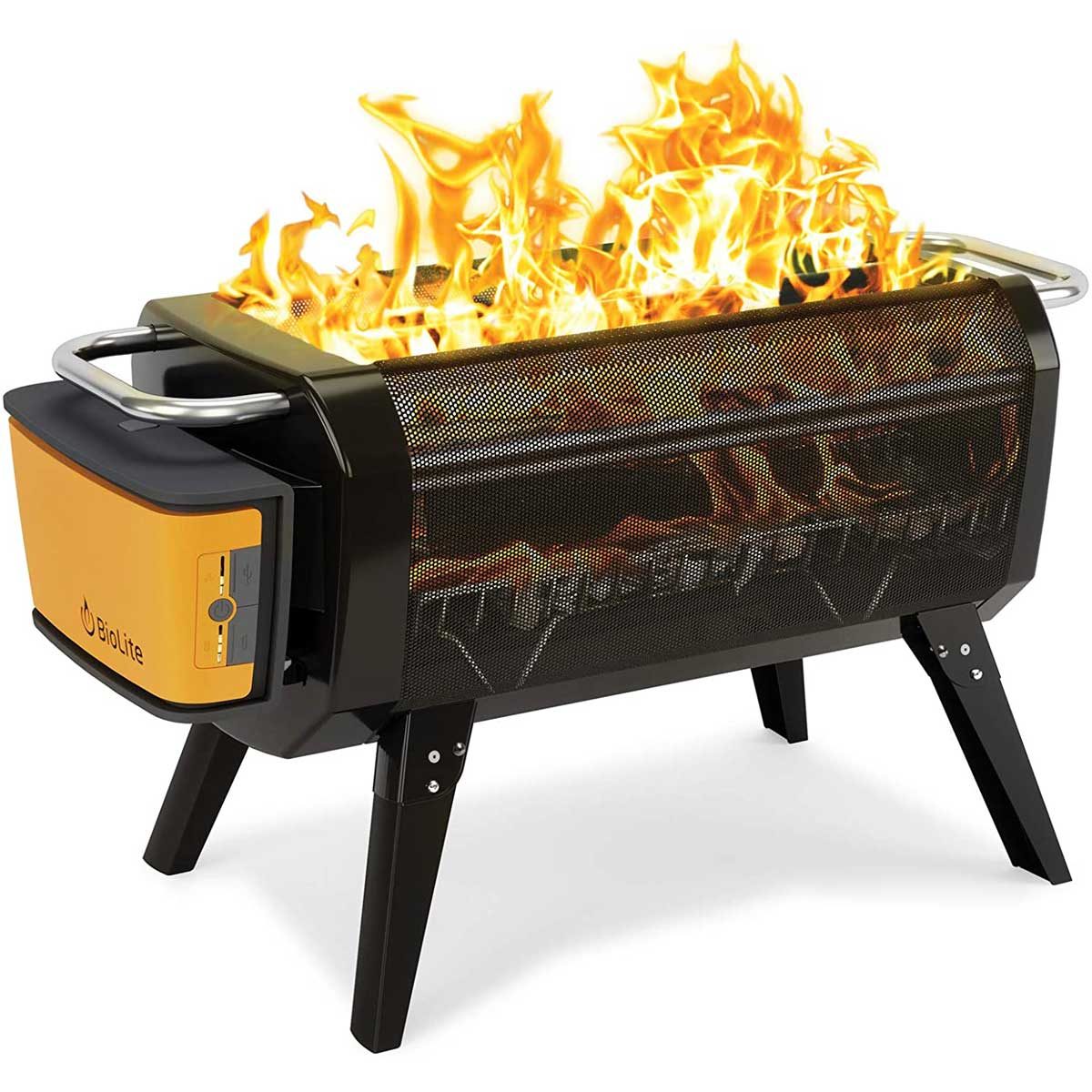
Portable Outdoor Fireplace
Standalone and lightweight fireplaces offer the freedom and flexibility to move the heat and illumination around an outdoor space. They also make it easy to store when not in use. Some fireplaces come with wheels, while others are light enough to carry with handles. There are also smokeless fire pit examples.
Pros
- Convenience
- More affordable than built-ins
- Low-maintenance
Cons
- Can’t be left unattended
- Heat is directed to one zone of your outdoor space
Great for tailgate parties or camping trips, we think the wood- and charcoal-burning BioLite Smokeless FirePit+ is pretty neat. It weighs less than 25 pounds and features carry handles and folding legs.
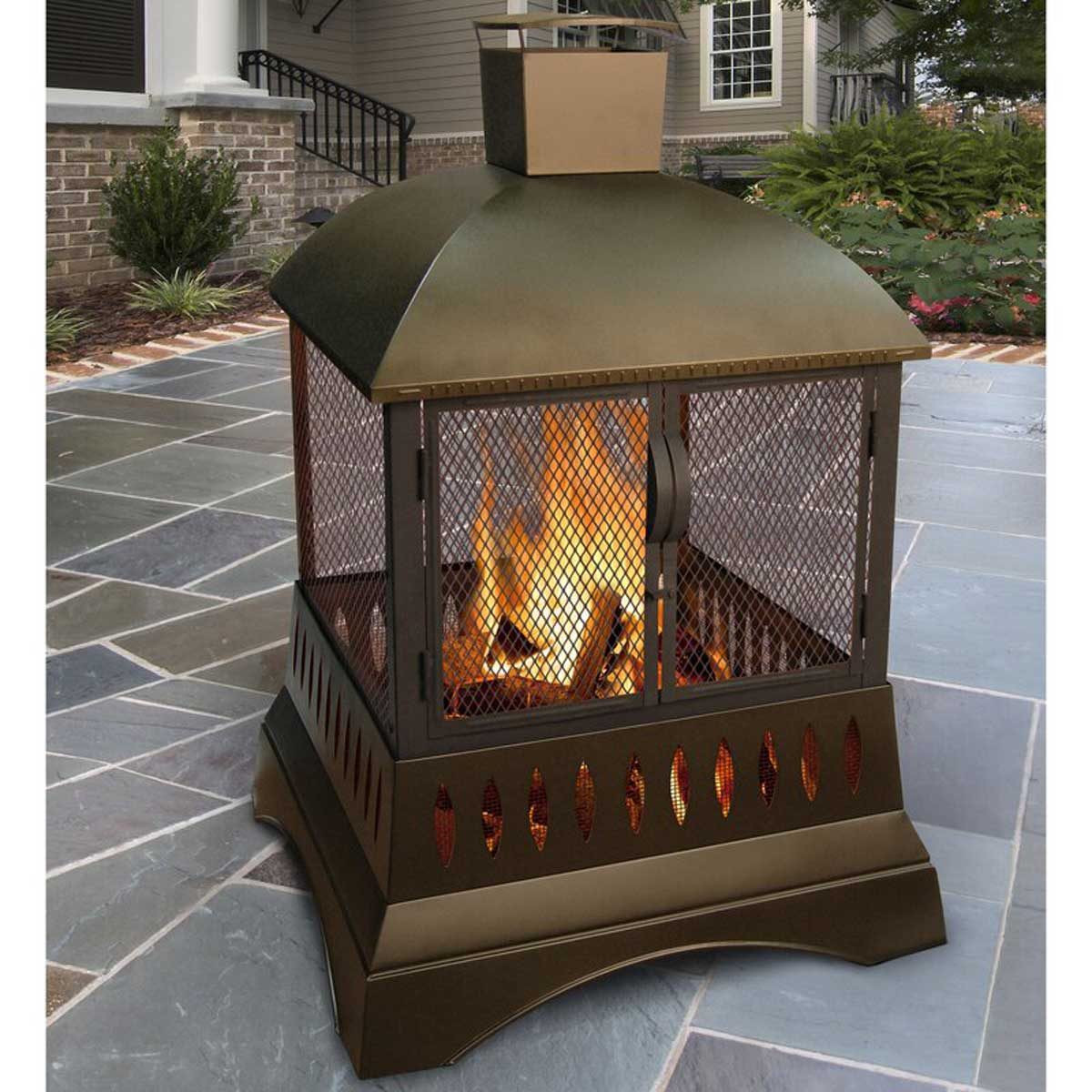
Small Outdoor Fireplace
Although fire pits are an excellent compact solution, the slightest breeze diminishes the heat. Small outdoor fireplaces with enclosed fireboxes, on the other hand, can generate a lot more heat depending on what’s being burned.
Pros
- Space-saving
- Great for small group gatherings
Con
- Heats a limited area
Measuring 15-1/2-in. high and 35-in. wide, the Landmann steel wood burning outdoor pagoda is ideal for non-flammable surfaces like concrete, brick or stone. You can also place the pagoda safely on a wooden deck or balcony if you use a heat-resistant barrier like this fire pit mat.
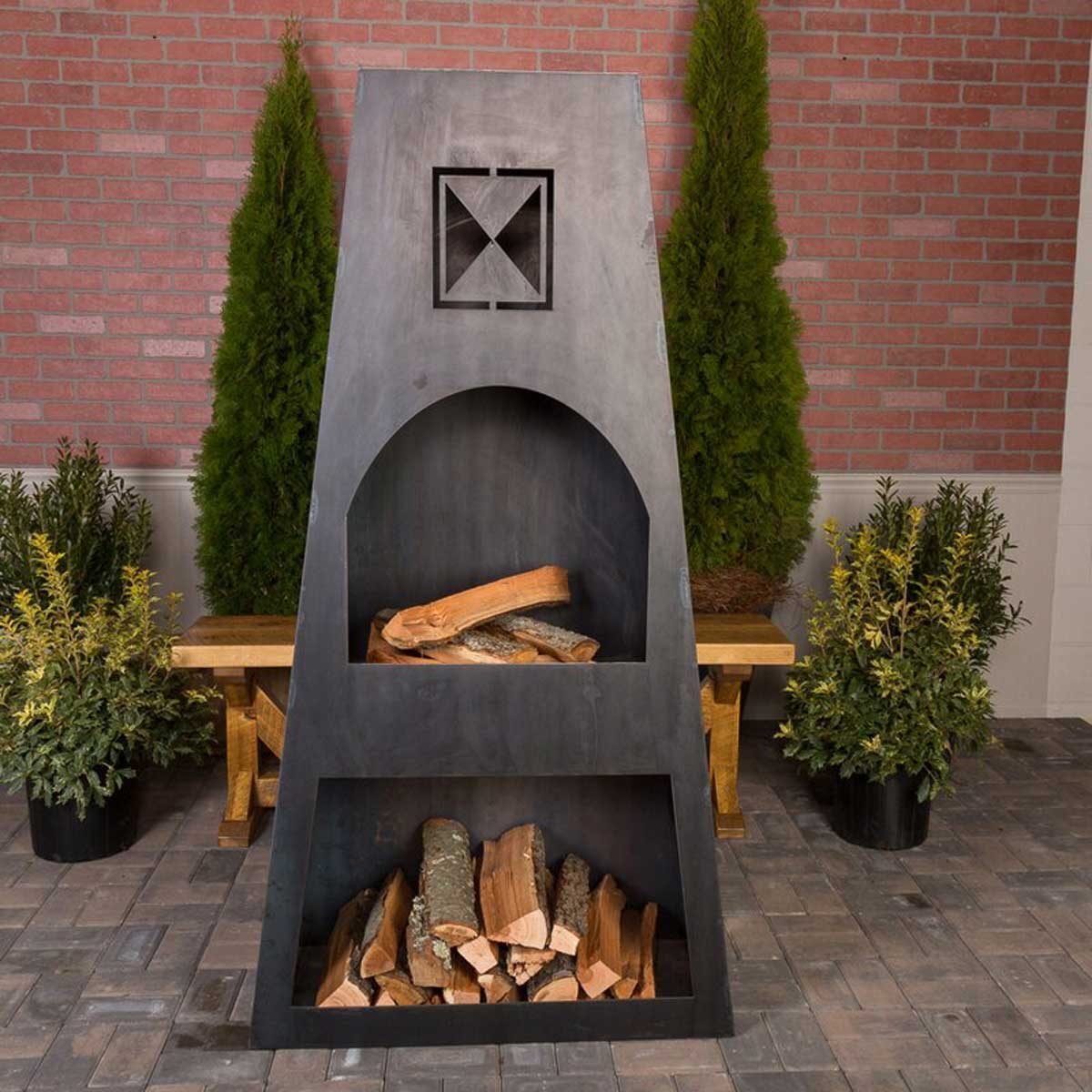
Steel Outdoor Fireplace
Outdoor fireplaces made of steel, whether free-standing or built into an exterior structure, are easy to maintain and clean.
Pros
- Strong and sturdy
- Weather-resistant
Cons
- Hot to the touch
- Prone to rusting
The handsome Wrought Studio Dewolf steel wood-burning outdoor fireplace is made of 12-gauge steel that actually gets better looking over time. It develops a charming patina when exposed to the elements.

Propane-Burning Outdoor Fireplace
Burning hotter than natural gas or wood, liquid propane-powered fireplaces are a great choice if heating up a large outdoor space is a top priority.
Pros
- No ashes or embers to clean up
- Turns on with a switch
Cons
- Propane is not a renewable energy source
- Flames dance but don’t crackle
- Fuel can be expensive
Looking and feeling like the “real thing,” the ready-made and easy-to-assemble-by-one-person Cal Flame outdoor propane fireplace puts out 55,000 BTUs of heat. It comes with a fire log set and lava rocks. Choose from a stone or stucco veneer.
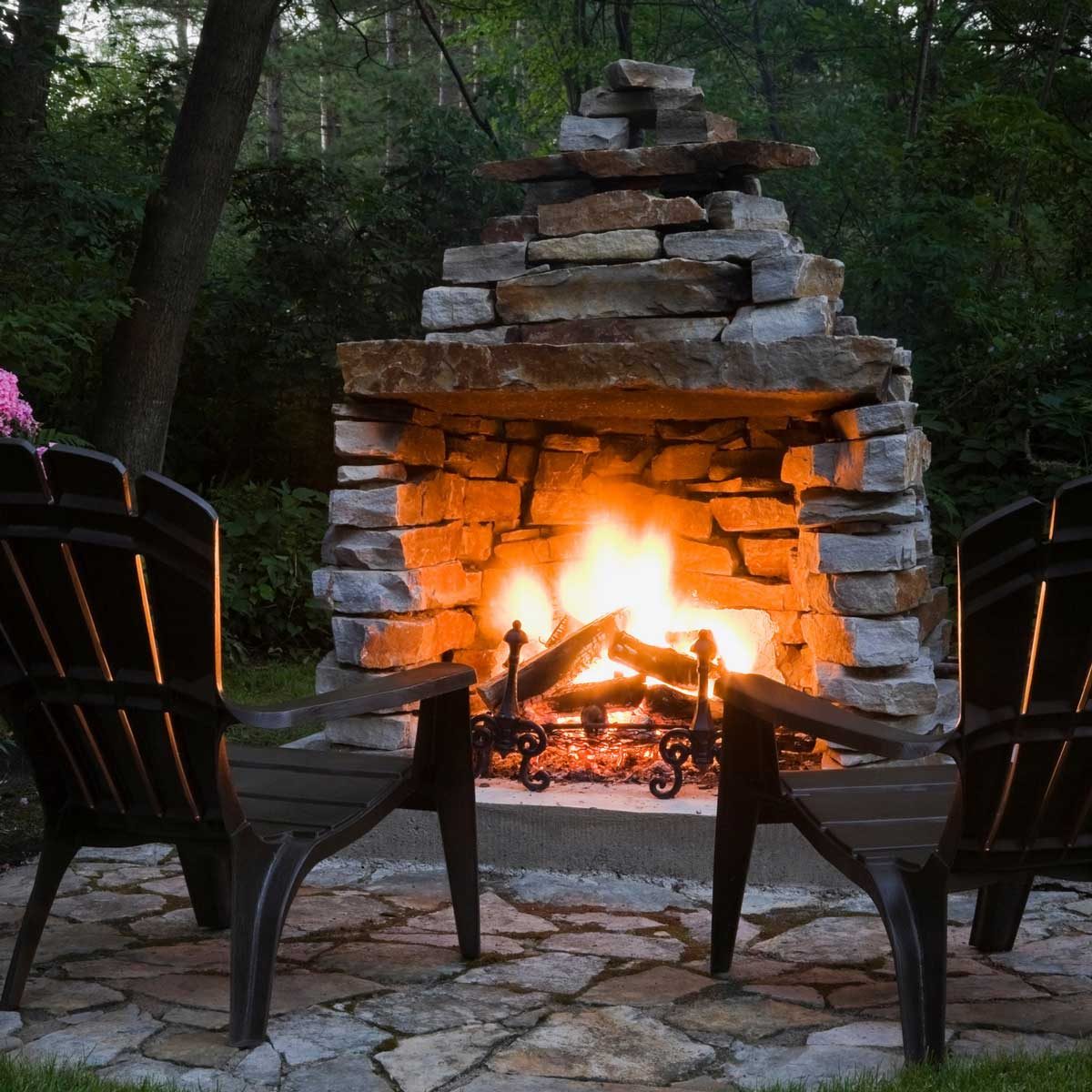
Stone Outdoor Fireplace
Usually constructed on top of a paver or concrete patio surface, outdoor stone fireplaces could be made of granite, limestone, slate, marble or even cobblestones. As a permanent addition to your home and landscape, they generally cost more to build but will last a lifetime.
Pros
- Customizable
- Can create a privacy screen
- Turns your outdoor space into living space
Cons
- A big investment
- Could require permits and permissions
Another DIY kit from Stone Wood Products, this gorgeous outdoor fireplace can be constructed with a curved or straight front 36- or 48-inch opening. The stone veneers are not included, which lets you customize the design to suit your taste and outdoor décor.
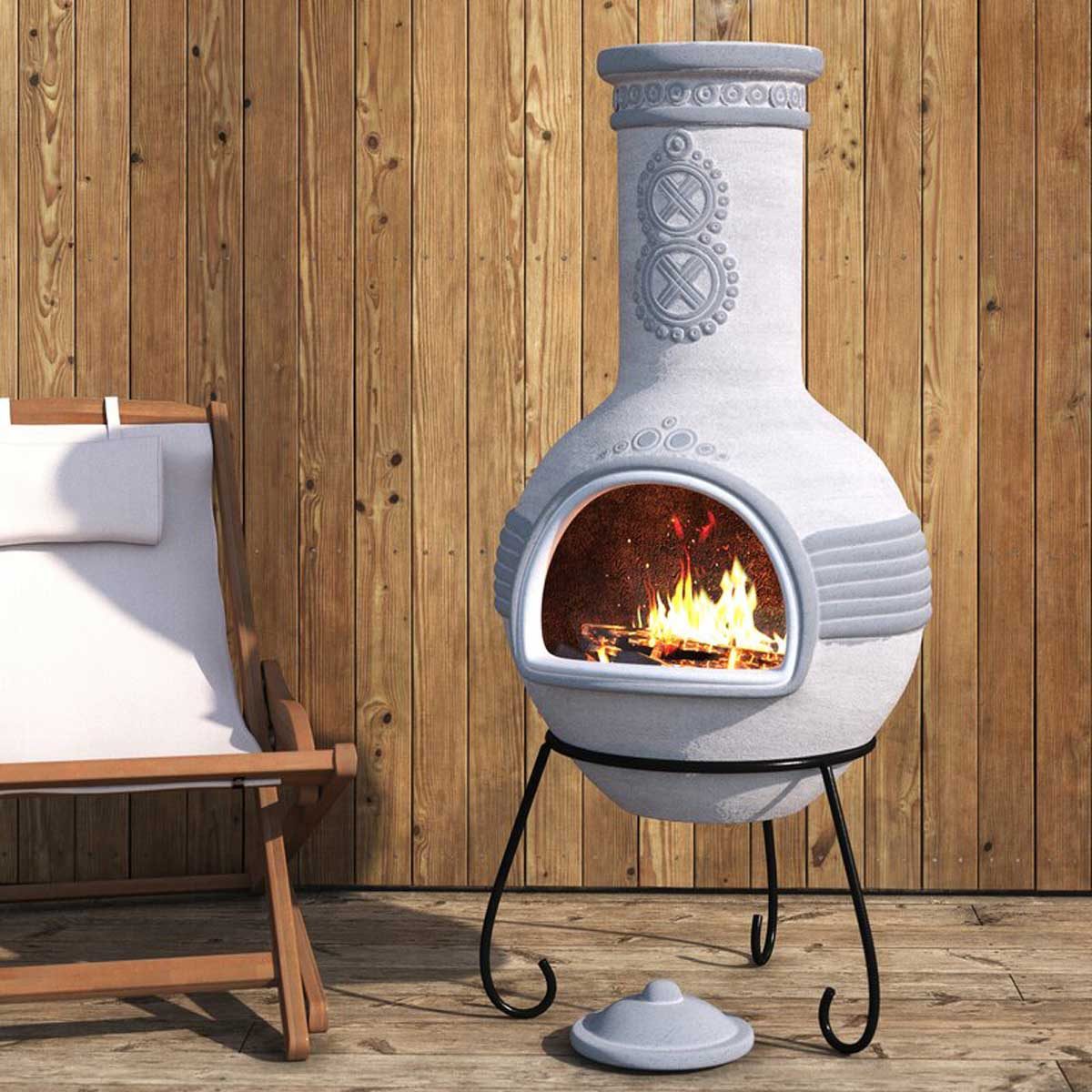
Chiminea Outdoor Fireplace
Chimineas (Spanish for chimney) are traditionally made of terra cotta, but today they come in metal, too. Characterized by small openings in the front to keep wind and rain from dampening the fire, their pot-belly shape makes them excellent heat producers.
Pros
- Directs heat outward and smoke upward
- Burns all types of wood
- Safer (less likely to throw off sparks and embers)
Cons
- Must be dry to start fires
- Can’t be placed on wood surfaces
If you have a large outdoor area, the Midgard clay wood-burning outdoor chiminea is a tad over 49 inches tall and almost 22 inches in diameter. It sits on a metal stand and features a raised Mexican Aztec design molded into the body and funnel.
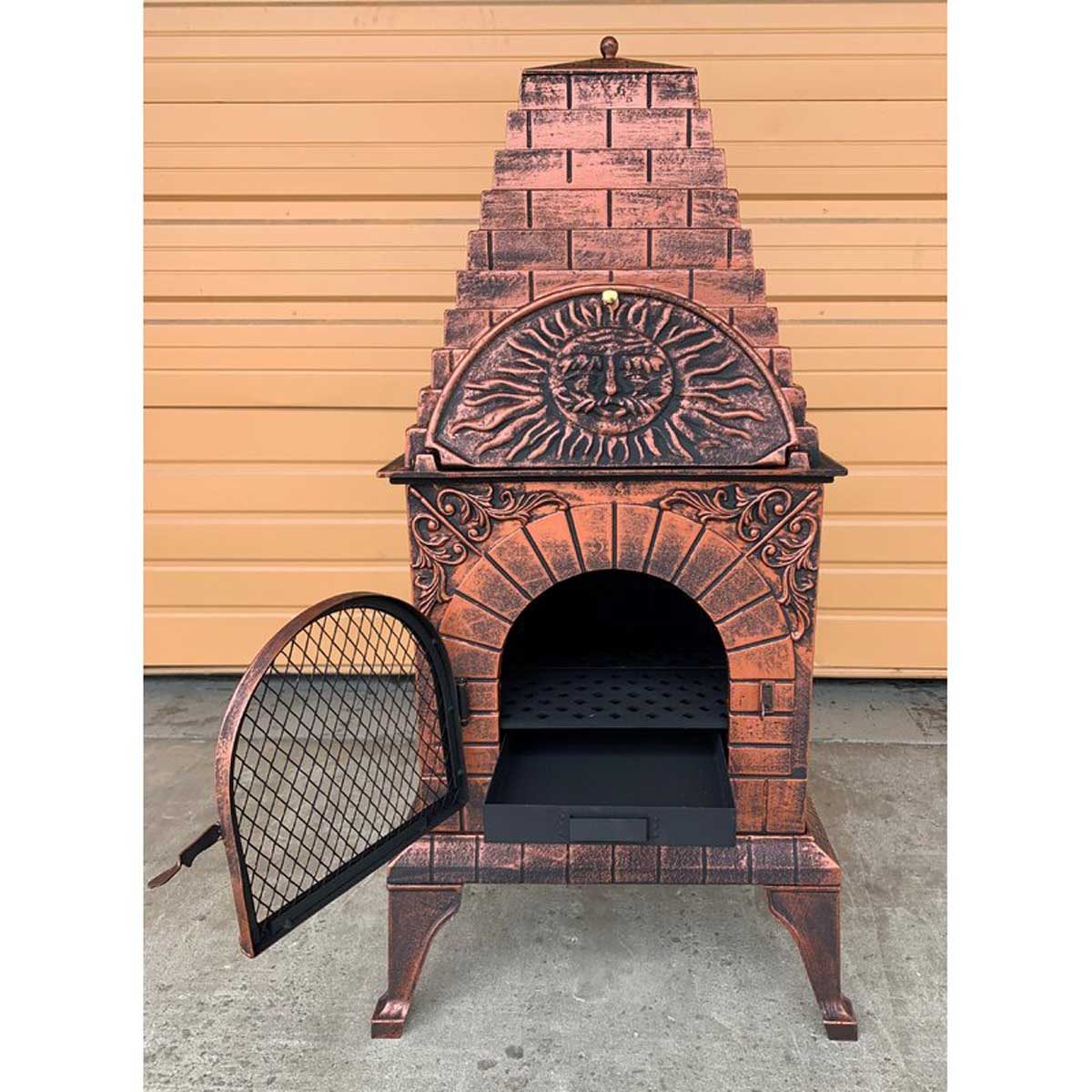
Outdoor Fireplace With Pizza Oven
Pizza ovens have a dome-shaped cooking chamber that’s capable of reaching high temperatures — 800 F or more. To build a full-size, outdoor pizza oven requires some serious masonry skills, but it can be done!
Pros
- Enjoy crackling fires while cooking pizza
- Great for entertaining
Cons
- Need extra-dry hardwood to reach high temperatures
- Expensive to build
- Will make the neighbors jealous (!)
- May require special permits
For a simpler and more affordable option, we love the Scipio pizza oven by World Menagerie. Made of cast iron for great heat retention, there’s a wood-burning fireplace below and a grill hidden on top behind the sunburst door. Remove the top cover and you can use the grill for open cooking.
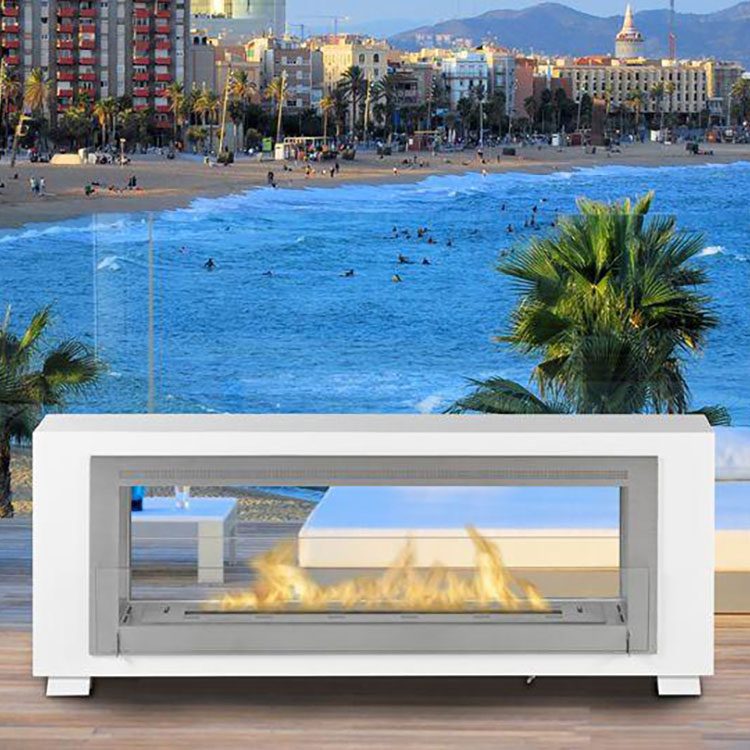
Ethanol Outdoor Fireplace
One of the most eco-friendly fuels to burn in an outdoor fireplace is ethanol, a renewable biofuel derived from plants. Ethanol produces real, not fake, flames. And ethanol fireplaces come in a dizzying variety of sizes, shapes, materials and styles.
Great for creating ambiance, they generate less heat than traditional wood-burning fireplaces, so they’re best suited for summertime use.
Pros
- Odorless and smokeless
- Requires no venting
- Fuel is cheap
Cons
- Gas must be stored in closed containers
- Produces VOCs (although not an issue when used outdoors)
- Flames take time to fully “fire up”
If you have the means, don’t feel like you have to cut corners. The Eco-Feu Santa Cruz two-sided free-standing biofuel fireplace is ideal for creating a luxurious outdoor living space. It can be used as a freestanding fireplace in the middle of a seating area or inserted into a dividing wall for two-sided enjoyment.
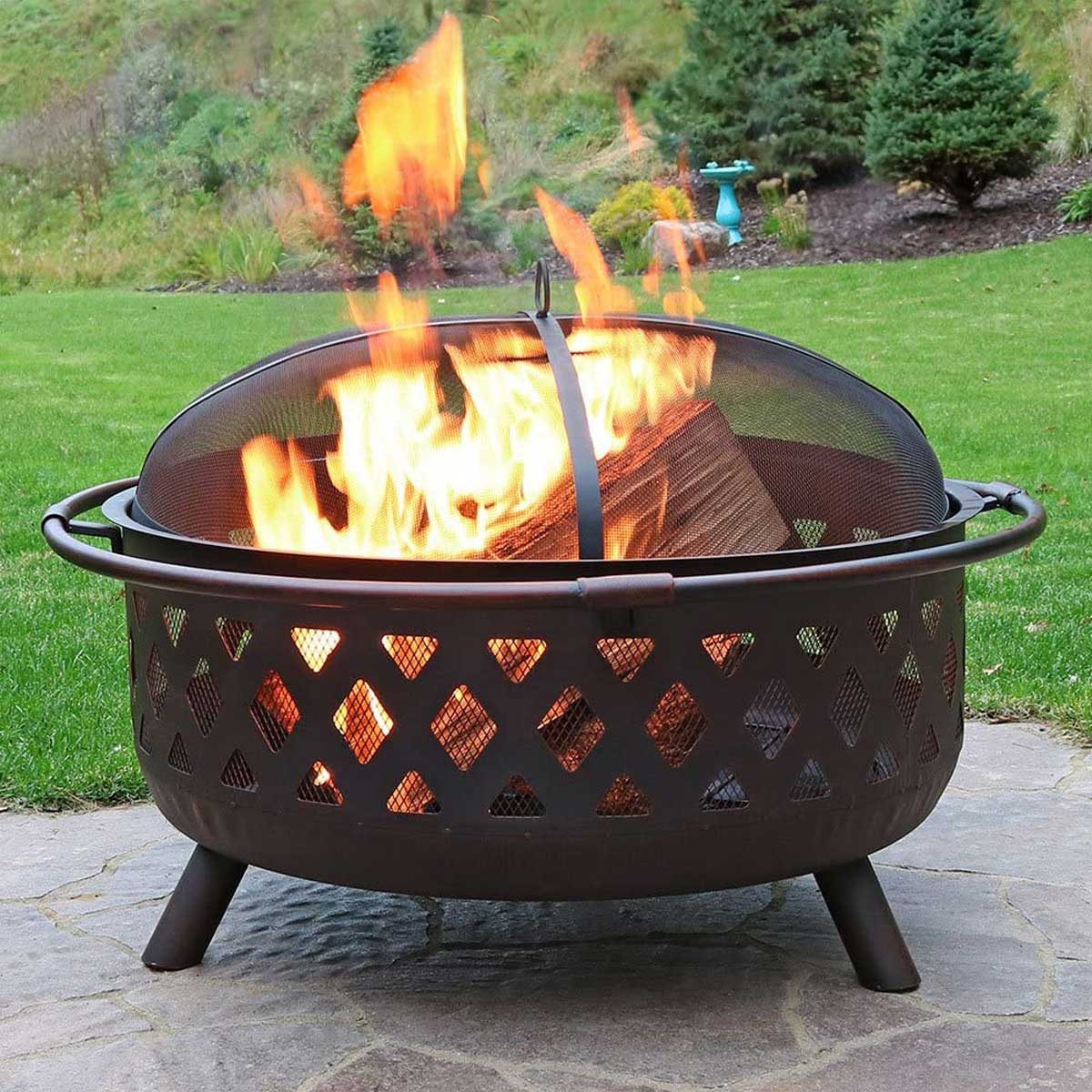
Outdoor Fire Pits
Although fire pits come in stone, brick, metal or concrete, they feature the same basic design: Raised walls with an opening on top. Fire pits are traditionally round, but you can also find square, rectangular and oval shapes. Most burn wood or gas. They’re inexpensive and can be placed almost anywhere.
Pros
- More people can gather around
- Won’t obstruct views
- In many regions, permits are not required (check with local authorities)
Cons
- Flames and embers can be blown about by the wind
- Safety issues (tripping and falling into the pit, children burning their hands, etc.)
Thanks to its pretty, lattice-work design and spark-screen cover (included), as well as its affordable price, the Sunnydaze crossweave outdoor fire pit is our pick for the best wood-burning fire pit.

